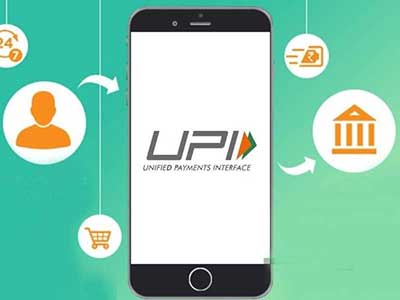Date: 31/03/2023
Relevance: GS-3: Indian Economy and issues relating to planning, mobilization, of resources, growth, development and employment.
Key Phrases: UPI Transactions, NPCI, Merchants, Digital Wallet, KYC, Interchange Fee, Merchant Discount Rates, POS.
Context:
- The National Payments Corporation of India (NPCI) has recommended an interchange fee on Unified Payments Interface (UPI) transactions of over Rs 2,000 made through Prepaid Payment Instruments (PPIs).
Introduction of Interchange Fee and Wallet Loading Charges:
- The National Payments Corporation of India (NPCI), the umbrella organization for UPI, recently introduced two types of charges on UPI transactions: interchange fee and wallet loading charges.
- Interchange fee is a percentage of the transaction value that the
retailer or merchant must pay to the wallet provider.
- The fee covers the cost of operating a digital payment network and compensates for payment risks. The interchange fee can vary from 0.5% to 1.1% of the transaction value.
- The interchange fees should not be mistaken for MDR, which is a
fee imposed on merchants by acquiring entities, typically banks in the case
of cards.
- Interchange fees, on the other hand, are paid by the acquirer or merchant to the issuing entity, including banks and wallets, to offset the risk of payment.
- For example, a wallet provider like Paytm Payments Bank stands to gain income from the transaction through these interchanges fees.
- The wallet loading charge is primarily intended to compensate
banks for the loss of float or CASA (current account savings account)
income.
- If a user transfers money from Bank X to their Amazon Pay wallet, Amazon Pay must pay a 0.15% fee to Bank X, if the transfer is Rs 5,000 or more.
- However, the most significant step is permitting interoperability
between wallets. At present, if a user maintains a Paytm wallet, he cannot
use the POS or QR of a PhonePe.
- From April 1 2023, that will no longer be the case; just like credit cards, wallets can also be used irrespective of the QR issuer
Who Bears The Incidence Of The Charges?
- The interchange fee would be borne by the merchant, while the wallet loading fee would be borne by the wallet provider. However, the possibility of the cost being passed on to the customer cannot be ruled out.
- With credit cards, small vendors sometimes load the interchange fee onto the customer. This is also possible with UPI payments done through wallets.
- However, larger merchants may absorb these charges, as they already bear the cost of sound boxes, which offer the safety and convenience of transactions
Impact on UPI Customers:
- Only fully KYC compliant digital wallets and transactions of Rs
2,000 or more to a merchant will attract these charges.
- This means that the proportion of UPI customers impacted by the additional cost may be quite small.
- According to NPCI, payment transactions from one bank account to another account constitute 99.9% of UPI transactions.
- Wallets are usually loaded for ease of digital payments for frequent
purchases such as online shopping, food ordering, or cab services.
- Therefore, the impact of these charges on the average UPI customer may be minimal.
Reasons for Introducing the Charges:
- NPCI may have introduced these charges to test the waters on the outcome of a UPI user segment if they are subjected to charges.
- The commercial viability of payments banks is challenged, and allowing them to charge an interchange fee could offer some relief while getting a dipstick of consumer behaviour if they must pay for payments.
Will This Impact The Growth Of UPI?
- The proposed charges are unlikely to impede the growth of UPI. Smaller merchants focusing on household needs like a furniture shop or a clothes shop may not entertain the use of wallets for UPI payments.
- However, given that it is a minuscule segment using wallets for UPI transactions; it is unlikely to be counterproductive for the UPI ecosystem.
Conclusion:
- UPI transactions may become more expensive, but only for fully KYC compliant digital wallets and transactions of Rs 2,000 or more to a merchant.
- The impact on the average UPI customer may be minimal, as the proportion of customers impacted may be quite small.
- While the introduction of these charges may have been aimed at testing the waters, the commercial viability of payments banks may be challenged, and allowing them to charge an interchange.
Source: The Hindu BL
Mains Question:
Q. What are the charges that have been introduced on UPI transactions? What is the probability of these charges being passed on to customers? (150 words).






















